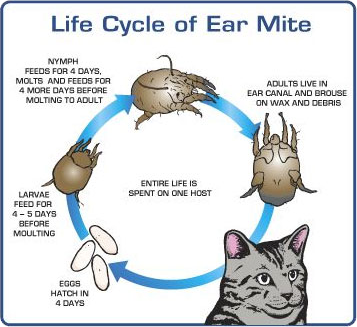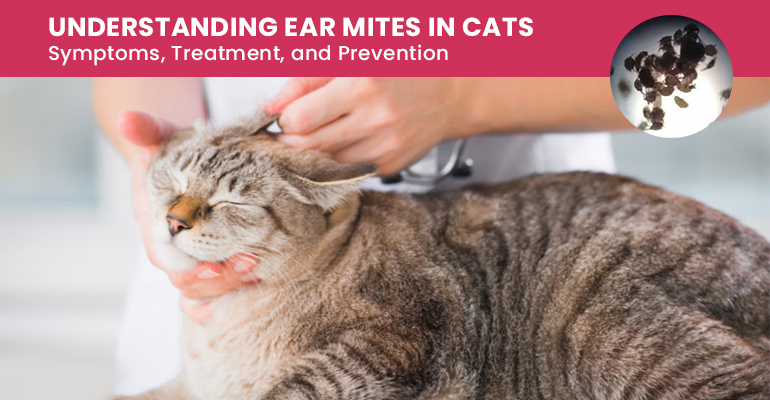Understanding Ear Mites in Cats: Symptoms, Treatment, and Prevention
Ear mites which are commonly nicknamed as Otodectes cynotis, basically refer to microscopic parasites capable of infecting a cat’s ears badly. These parasites usually prefer to exist in the ear canal as the environment is warm and dark making it easy for them to consume the skin debris. There are other areas as well where these kinky parasites can occasionally be found including the tail, back, and neck.
The irritation and itchiness caused due to the menace of these mites’ causes a cat to scratch its ears harshly after growing extremely irritated. The scratching further results in problems such as swollen ear flaps or skin infections, which demand veterinary attention at the earliest. Ear mites are more than capable of damaging the eardrum and ear canals badly which may even cause permanent hearing loss if not tackled effectively. It is important to catch and treat these mites as quickly as possible in order to avoid any kind of dissatisfaction to a happy cat.
Life-Cycle of Ear Mites:

These parasites are usually extremely common in domesticated cats and kittens and can easily be transmitted to other animals simply through touch. Let’s take a look at the life cycle of an average ear mite which usually encompasses over a period of 21 days:
- Eggs which are laid on the surface of the ear canal usually hatch after a period of 4 days.
- The larva which is created from the eggs usually feeds for a couple of days before taking a day’s rest resulting in the formation of the nymphal stage.
- The nymphs feed for a period of about 4 days going on to molt and feed again for a period of approximately another 4 days. They then undergo the process of molting again before becoming adults.
- Adult ear mites feed off the skin flakes and secretions in the ear canal and lay their eggs to begin the next generation.
Symptoms:
There are certain symptoms which indicate that a cat may be a victim of an ear mite infection. Let us take a look at some of those symptoms-
- Shaking the head repeatedly
- Irritation in ears resulting in frequent scratching
- Bleeding in the ear canals
Treatment & Prevention:
Ears need to be properly tended to and treated up to a period of 4 weeks approx which depends upon the medication being utilized until all the mites are killed. There are several mites who live on the tail, back and other areas all over the body which is why these areas need to be treated. It is necessary to use only products approved for being utilized on cats as well as household pets as ear mites are easily transferable.
Treatment of this infestation in such a situation usually commences with the removal of excess discharge and debris with the use of a cat-specific ear cleaner. The ears further need to be treated with the help of a topical preparation (ear drop) which is used to kill mites. This treatment should be persisted with for the next 2 weeks even after the mites are dead.
In order to prevent any ear mite attack on your beloved cat, you should ensure that your cat’s ears are regularly cleaned. At the same time, one can also go about using products like the revolution for cats which also fights against hookworms. Revolution guarantees all-round protection and needs to be applied only once every month on the cat’s body.
Ear mites are an alarming threat to the overall well being of our furry friends and need to be negotiated effectively at any cost.




